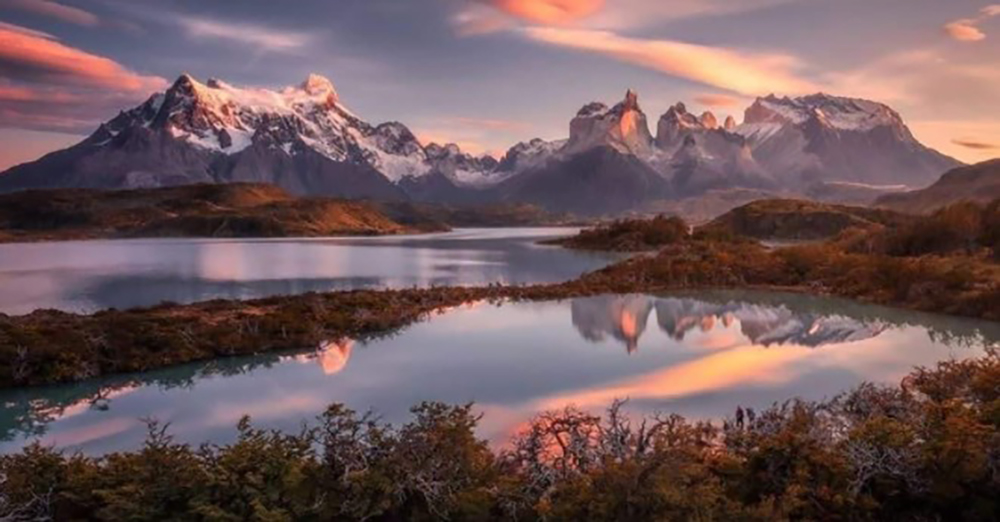Compared to other planets in the solar system, the Earth has significantly more water than Earth. So where did the water come from, which is so important for living things and occupies about 70% of the earth’s surface? This question is still controversial, and there are two possible theories that have been answered.
The first theory is that the earth has had some water since its inception. About 4.5 billion years ago, the solar system originated from a disk-shaped nebula containing gas and dust. At the beginning, the nebula contained ice, and the Earth and all the other planets owned some water from the beginning. These glaciers are said to have been together since the beginning of the world, were in the middle of the earth, and rose from the middle to the surface and formed the oceans.
According to the second theory, the planets Earth, Mars, Venus, and Mercury were so close to the center of the solar system that most of the water on those planets evaporated due to heat. Only a small amount of water remained between their rocks. Shortly after the Earth formed, it collided violently with a large asteroid, and part of the Earth exploded as an asteroid. There, the world is losing more water. The Earth now has more water than any other planet, which is said to have been hit by a large number of icy asteroids that formed the oceans.
The study of the ratio of two hydrogen isotopes to the origin of water on Earth By studying the number of neutrons in naturally occurring hydrogen. The first is normal hydrogen, which contains only one proton in the nucleus. The other is heavy hydrogen, which contains both protons and neutrons. This heavy type of hydrogen is called deuterium. The ratio of hydrogen found in the Earth’s oceans is very similar to that of asteroids. These asteroids are richer in water and carbon-like nitrogen than meteorites.
In addition, meteorites that land on the earth always carry a cat-like rock. Because the water needed to form these rocks, water on Earth may have come from rocks in space. So, based on these two proofs, the second theory is more likely. The inner rock planets of the solar system have very low water content compared to the lunar planets of the outer planets (Uranus, Saturn, Neptune, Jupiter). This shows that in the early days, the water from the inner planets evaporated and the water from the outer planets did not evaporate.

If the earth’s water had evaporated at that time, it would have been replaced by something else. It is likely to be recovered from ice-rich asteroids outside the solar system. Water was later discovered in asteroids and meteorites in the meteor belt, and this hypothesis proved very plausible. So is the claim that asteroids and meteors formed the Earth’s water? I can’t say that yet.
For this proposal to be true, the isotope ratio in the oceans must remain unchanged from four billion years ago. The findings show that the early hydrogen content of the Earth was much lower than that of deuterium today. This change in proportions causes early sunlight to heat both hydrogen and deuterium. There, hydrogen is lighter, so it could be thrown into space, leaving only deuterium.
A study of some of the oldest rocks in the world reveals a different answer. The isotope ratio there is not the same as that of the asteroids, but similar to the ice in the early nebula. These rocks have more normal hydrogen and less deuterium. However, the current ratio of water in the sea is similar to that of asteroids. This seems to have changed something some billion years ago.
If the Earth’s oceans did not come from asteroids but existed with Earth, then some problems would have been solved. The first problem is why there is so much water on Earth, and the second is why living things that need water start to form as soon as the earth’s surface solidifies. The latest theory is that the oceans have always been in the interior of the earth since the beginning of the world. Earth’s crust causes the water inside it to rise to the surface, forming oceans. In this way, the waters of the earth’s crust and the oceans on the surface of the earth are in rotation.
In fact, it is possible that the Earth’s water came together in the interior of the Earth from the beginning of the world, or that it came from ice from asteroids, which combined to cover 70% of the Earth’s surface. It is unknown at this time what percentage of water is present in each of the two cases and how to determine the percentage. Therefore, this puzzle will take some time.
















